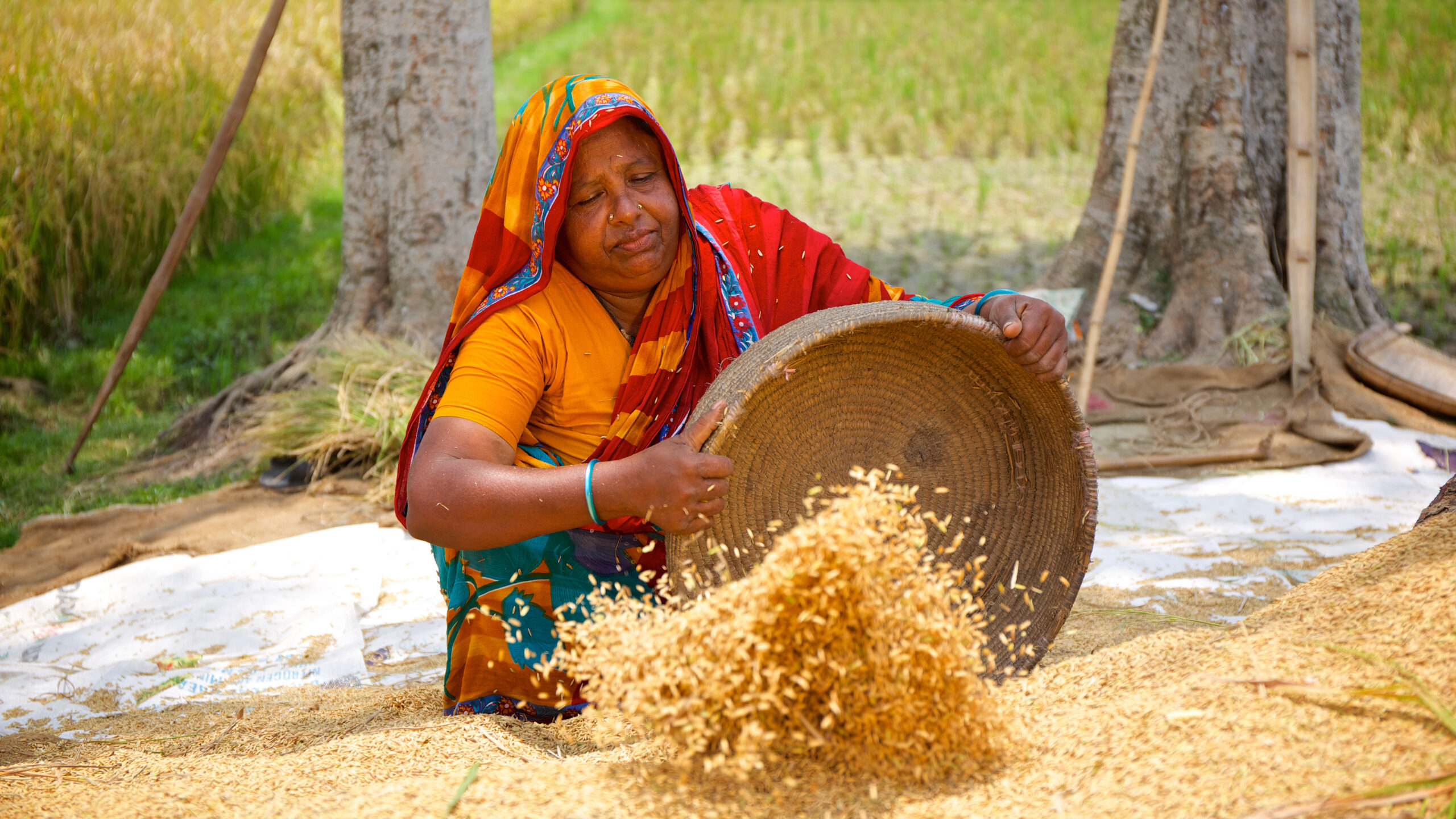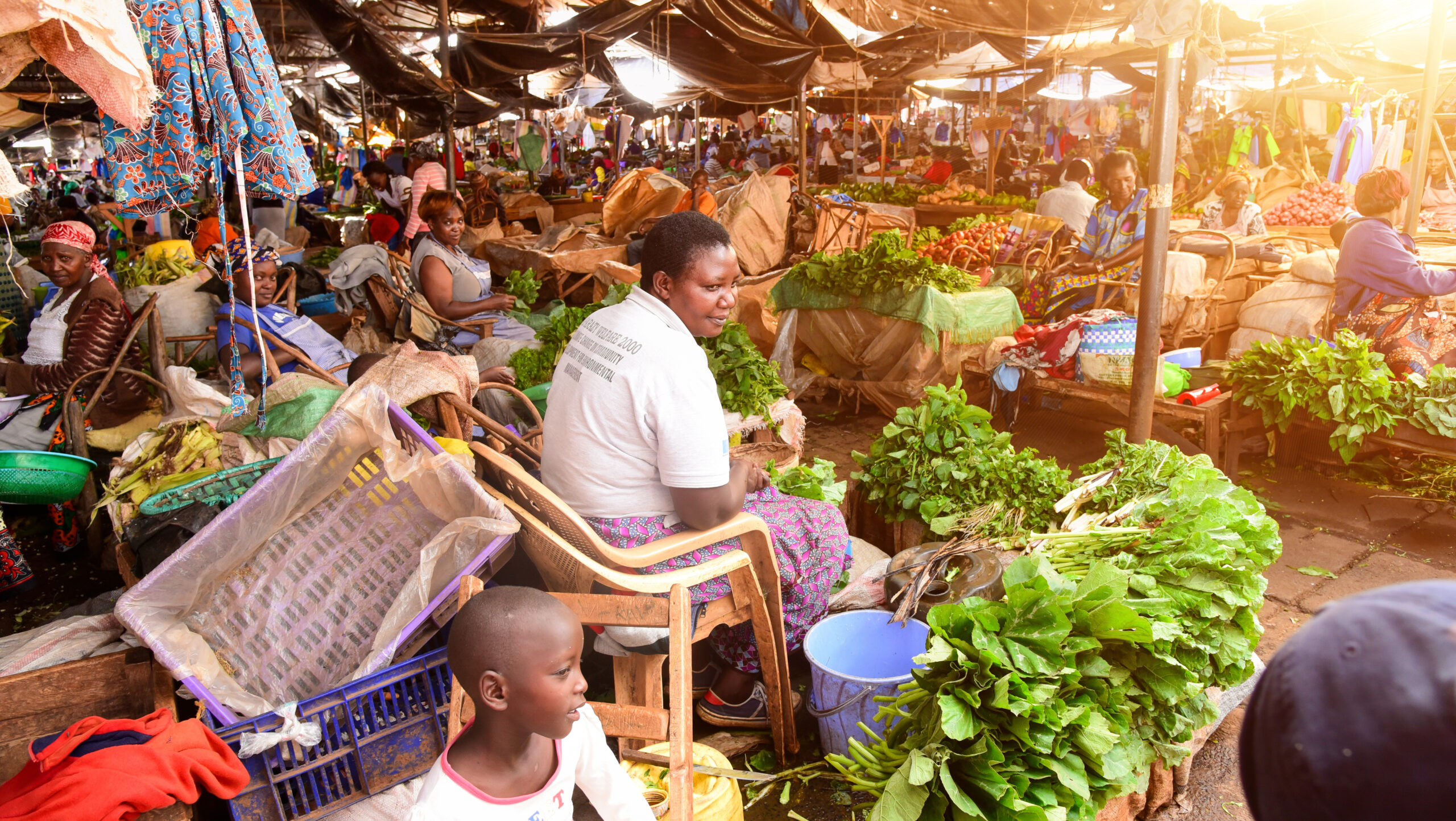Populations across South, East, and Southeast Asia, where rice is the main staple food, have some of the highest estimated prevalences of inadequate zinc intake in the world. While rice provides ample energy and a base intake of many minerals and vitamins, it doesn’t provide zinc at levels high enough for optimal health—restricting growth, immune function, and more.
This public health challenge prompted the development of biofortified zinc rice—varieties enriched with additional zinc—by HarvestPlus, the International Rice Research Institute (IRRI), and the Alliance of Bioversity International and CIAT, alongside national agricultural research and extension systems.
The biofortified rice breeding program has made significant progress increasing the levels of zinc in varieties available to farmers: Zinc rice contains up to 28 milligrams of zinc per kilogram of rice (or 28 parts per million, ppm), nearly double the typical amount in common traditional rice varieties (16 ppm). Farmers in Bangladesh and Indonesia have been growing and eating zinc rice since 2014 and 2018, respectively.
Breeders and scientists are continually improving the nutrient density of crops, alongside other farmer-preferred traits like high yield and drought resistance. Yet, plant breeding can only reach a maximum level of zinc, given the limited range of genetic variation for zinc in rice germplasm. Higher concentrations can be reached through the application of zinc fertilizers in the soil (agronomic biofortification) or by transgenic methods. For example, scientists at IRRI have developed transgenic rice with levels of zinc reaching up to 45 ppm.
To understand if there is a ceiling level of zinc in rice that achieves maximal public health gains, we recently completed a study, published in the Journal of Nutrition, using data from Bangladesh, Indonesia, and Philippines, drawn from detailed dietary assessment surveys conducted in each country.
Our study explored the possible impacts of eating biofortified rice varieties with a range of zinc contents on zinc intake, focusing on women and children under five years old. Simulations were run with zinc rice containing 20, 24, 28, 30, 45, 60, 75, and 100 ppm of zinc, with the assumption that the zinc rice would be substituted for non-zinc rice in the diet in increments ranging from 10%–70%.
Results indicate that the prevalence of zinc inadequacy markedly decreased with increasing zinc ppm and substitution levels across all countries.
The sharpest drops in zinc inadequacy were observed among women in Bangladesh, with immediate reductions in the prevalence of inadequate zinc intakes as ppm levels increased, up to 45 ppm zinc where impacts leveled off. Remarkably, zinc rice had the potential to completely close the gap in nutrient intakes in Indonesian children, even among 4-5-year-olds with an initial 80% prevalence of inadequacy.
At 28 ppm (the level currently targeted by biofortification breeding programs), eating zinc-biofortified rice can substantially reduce zinc inadequacy in the studied geographies by up to 50%. The effect is greatest in countries that consume the most rice, including Bangladesh and the Philippines. For almost all age groups and countries, the benefits tapered off at 45-60 ppm.
The study suggests that continuing work to boost zinc concentrations in rice to 28 ppm and above can have clear benefits. But this should complement efforts to expand the number of people growing and consuming zinc rice. Overall, data show that once zinc levels in biofortified rice reach 45-60 ppm, programs should invest heavily in increasing coverage and reaching the highest numbers of beneficiaries, rather than on reaching greater increases in zinc density, to offer these populations the best return in reduction of zinc inadequacy and greatest potential to lead healthy, productive lives.
Fabiana F. De Moura is a Nutrition Scientist at the U.S. Food and Drug Administration; Mourad Moursi is the founder of Janari; Moira Donahue Angel is a Senior Research Analyst with IFPRI’s Nutrition, Diets, and Health Unit; Erick Boy is Chief Nutritionist and Jen Foley is a Senior Program Manager and the lead of knowledge translation at HarvestPlus, a program within IFPRI’s Innovation Policy and Scaling Unit. Opinions are the authors’.
This study was supported by HarvestPlus.
Referenced paper:
De Moura FF, Moursi M, Donahue Angel M, Angeles-Agdeppa I, Muslimatun S, Atmarita A, Gironella GM, Boy E, Carriquiry A. An Ex-Ante Analysis of the Impact of Biofortified Zinc Rice on Dietary Zinc Inadequacy: Evidence from Bangladesh, Indonesia, and the Philippines. J Nutr. 2024 Jun 25:S0022-3166(24)00349-3. https://doi.org/10.1016/j.tjnut.2024.06.010. Epub ahead of print. PMID: 38936549.







